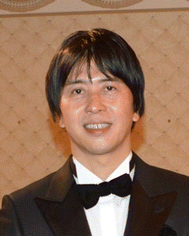Introduction to metal nanoclusters
Sukhendu
Mandal
a,
Di
Sun
b,
Yuichi
Negishi
c and
Anindita
Das
d
aIndian Institute of Science Education and Research Thiruvananthapuram, Vithura, India
bShandong University, Jinan, China
cTohoku University, Sendai, Japan
dSouthern Methodist University, University Park, Texas, USA
Metal nanoclusters play a crucial role in understanding the evolution of bulk structures from molecules, offering insights into their unique physicochemical properties. Due to their unique structural geometry and elegant properties, metal nanoclusters show potential across diverse fields, from molecular chemistry and nanotechnology to materials science and biology. This themed collection from Nanoscale presents recent advancements in atomically precise metal clusters and their assemblies, covering their structures, properties, and applications.
This collection features pioneering research in cutting-edge areas, covering new structures, photoluminescence, catalysis, mass spectrometry of cluster–DNA conjugates, nanocluster transformation reactions, and theoretical studies. Key topics in photoluminescence include infrared emission, ultrafast relaxation dynamics, and thermally activated delayed fluorescence, while catalytic studies focus on CO2 reduction, CO oxidation, and hydrogen evolution reactions.
This collection includes articles that discuss the origin of infrared emission in gold and copper nanoclusters. For example, Jin and co-workers’ study on a highly luminescent Au39(PET)29 (PET = 2-phenylethanethiolate) nanocluster with 19% PLQY in the NIR range (915 nm) in solution and 32% in film (https://doi.org/10.1039/D4NR00677A). This work on enhanced NIR-luminescence along with the mechanistic insights, is crucial for the fundamental understanding of PL and for future imaging and optoelectronic applications.
Demonstrating progress on mass spectrometry analysis of cluster–DNA conjugates, Copp and co-workers investigated 21 different Ag cluster–DNA species using ESI-MS, where the fragmentation is strongly dependent on the Ag-DNA template sequence. This work provides insights into the mechanisms by which Ag-DNAs degrade and transform, with relevance for their applications in sensing and biomedical applications (https://doi.org/10.1039/D4NR03533J).
This collection also covers the antibacterial application of Au22 nanoclusters modified with arginine for bacteria-infected wound healing, in work by Sipaut and co-workers. This work provides an approach for designing nanocluster-based photodynamic antibacterials for utilization in antibacterial therapies (https://doi.org/10.1039/D4NR03278K).
Catalytic innovations include Tang's work on alkynyl-protected Ag19Cu2 nanoclusters for CO2 reduction (https://doi.org/10.1039/D4NR02702G), and Cheng's theoretical analysis of Au clusters of 2 to 300 atoms for CO oxidation (https://doi.org/10.1039/D4NR02705A).
This collection concludes with review articles covering a diverse range of topics, including the application of luminescent nanoclusters in bioimaging, the role of metal clusters in catalyzing hydrogen production, recent advancements in the synthesis and properties of silver nanoclusters, and circularly polarized luminescence in clusters. Some examples include a review by Hyeon and co-workers on the recent developments in the synthesis and properties of silver nanoclusters (https://doi.org/10.1039/D4NR01788A) and an article by Ramankutty discussing circular dichroism and circularly polarized luminescence in ligand-protected metal clusters (https://doi.org/10.1039/D4NR01232A).
This themed collection presents a glance at atomically precise metal cluster research across various disciplines, highlighting both specialized and interdisciplinary advancements. It combines insights into synthesis techniques, unique structural properties, and applications of atom-precise metal nanoclusters, and the innovative concepts that can materialize the future of this field.
| This journal is © The Royal Society of Chemistry 2025 |



![[thin space (1/6-em)]](https://www.rsc.org/images/entities/char_2009.gif) 000 times, H index = 68.
000 times, H index = 68.
